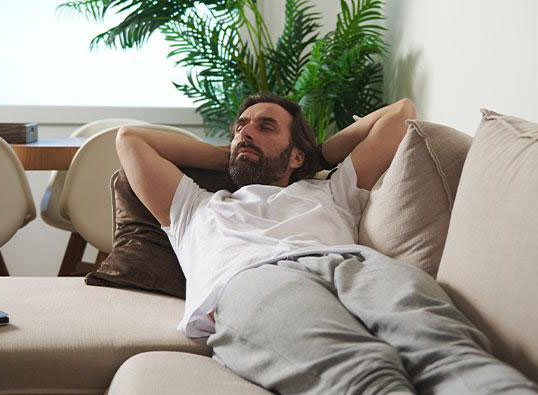Kegels – They’re for Men, Too: 3 Exercises to Curb ED
One of the most significant groups of muscles for a man’s sexual performance can’t be admired in the mirror. These muscles are hidden, but make no mistake, they carry their weight – and then some.
We’re talking about the pelvic floor muscles that support and surround your genital area. Though generally recognized as the muscles that help stop the flow of urine, they do a lot more. For men, this includes helping the penis achieve and maintain an erection, as well as prevent premature ejaculation.
Which is why for the estimated 30 million men in the United States who experience erectile dysfunction, Kegel strength training could serve as a first-line therapy.
Wait … Kegels For Men?
If you’re a man and you’ve even heard the word “Kegels,” you might have assumed these exercises are only for women. The pelvic-strengthening exercise is among the leading prescribed treatments for vaginal prolapse, birth-related incontinence, and healing after giving birth.
However, Kegels work for men for the same reasons they work for women: They build the pelvic floor muscles that surround the genitals; in this case the penis.
Of the three muscles you should flex to perform Kegels, the one that does the most work for strengthening an erection is the bulbocavernosus muscle, which becomes active during an erection and pushes blood into the penis.
With erectile dysfunction being the leading sexual performance problem men report (generally defined as the failure to reach or sustain an erection more than half the time), a do-at-home remedy like Kegels is practical, and risk-free
A Good Pelvic Workout: 3 Approaches
These three Kegel workouts may improve ED when performed consistently and as directed. Choose the best approach for you, or try alternating the three.
The back approach
- Lie on your back with your hands flat on the floor and knees bent and pointing upward.
- Using your pelvic muscles, try to draw your penis toward your body (inward) and hold for five seconds.
- Next, squeeze you anus as if trying to hold a bowel movement and hold for five seconds.
- Alternating, repeat both squeezes eight to 10 times, relaxing the muscles between each squeeze. Aim for three to five sets a day.
The side approach
- Lie on your side and place between your knees a pillow large enough to keep your legs apart.
- Squeeze your legs together and hold for five seconds.
- Repeat eight to 10 times, relaxing the muscles between each squeeze. Do three to five sets a day.
The chair approach
- Position yourself comfortably in a chair.
- Squeeze your penis muscles as if trying to keep urine from leaking and hold for five seconds. (Tip: When urinating, try to stop the flow. If you can, you’re performing the exercise correctly.)
- Repeat eight to 10 times, relaxing the muscles between each squeeze. Perform three to five sets a day.
How Long Before I See Improvement?
As you grow accustomed to these exercises, you can increase the length of time and repetitions (some approaches, like the chair, can be performed without anyone knowing). If the exercises are performed correctly, you should notice improvements after four to six weeks.
To ensure you are exercising correctly, keep these tips in mind:
- Don’t hold your breath while squeezing (it might help to count out loud).
- Don’t push down; pull the muscles together as if trying to lift something up.
- Keep your stomach muscles relaxed.
- You should not feel pain while performing Kegels. If you do, stop the exercise and call a doctor.
Your Unseen Pelvic Muscles Do a Lot – So Can Kegels
The added bonus of performing Kegels is they improve your bladder health. They also can manage swelling associated with enlarged prostate and help men preparing for prostate cancer surgery.
That’s a lot of benefit from a group of exercises that, like the muscles they strengthen, can be performed without anyone seeing.



